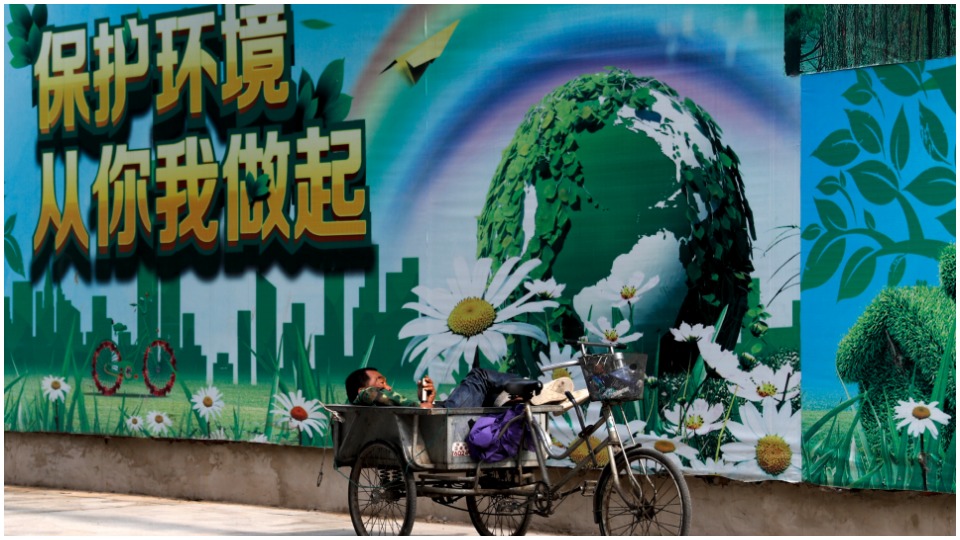
As a testament to the growing momentum for the Green New Deal, over 900 people gathered in the small town of Acton, Massachusetts, on a frosty Sunday night, just five days into the new year, to hear from U.S. Senator Ed Markey, its sponsor in the Senate. Markey, himself a little surprised by the popularity of the GND town hall event, remarked that he was gratified by “the 900 plus people who are engaged and willing to show up and demand bold, progressive action on climate from their leaders.”
While growing public interest in the GND here at home is laudable, the momentum of looming climate catastrophe is already slaughtering millions of animals and humans in places like Australia and Indonesia. Support for bold, progressive action on the climate emergency underscores the reality that we are in a race with time to stop the suicidal destruction of the ecosystem that sustains us all.
The Green New Deal and initiatives like it throughout the world are essential parts of that race, but there are some examples that may be more worth studying than others. There is also a social system better equipped than ours to rapidly respond to the dangers we face. To efficiently accomplish the broad goals of the GND, the U.S. must engage in comparative scientific prioritization and planning which works for both the people and the land.

China’s Green Revolution
The Chinese leadership have achieved nearly miraculous environmental goals in just a few years, while maintaining economic growth of over 6% in 2019, while the U.S. struggled to achieve 2.1%, according to the Bureau of Economic Analysis. As Dean Baker, senior economist at the Center for Economic and Policy Research in Washington, D.C. wrote, “Rather than spending so much effort worrying about what China is taking from us, we should be thinking about what we can get from China.”
The ways in which China is leading the green revolution are many. China has become the world manufacturing leader of electric cars. It has invested heavily in a national fleet of electric buses for public transportation. The People’s Republic has the highest afforestation rate of any country or region in the world. It leads in the research, development and manufacture of renewable energy sources and is the world’s top electricity producer from renewable energy sources, with over double the generation of the second-ranking country, the U.S.
As a follow-up to decades of progress on environmental concerns, this past October, the Central Committee of the Communist Party of China adopted a policy framework to “promote highly efficient utilization of resources, improve institutions for ecological restoration and conservation, and strengthen the accountability system.” This framework is meant to expand China’s two-pronged approach to clean up its environment, including the strict regulation of pollutant discharges and cleaning up existing pollutants.
To help us understand how China’s environmental policies are performing, a report was released in November 2019 by the Ministry of Ecology and Environment. The report estimates that in 2018, China’s carbon dioxide emissions have been reduced by 45.8% compared to 2005, which is equivalent to 5.26 billion tons of carbon dioxide emissions. An important factor in this reduction has been the growth of non-fossil energy, which accounted for 14.3% of primary energy consumption.
China has been able to turn its environmental situation around by adjusting its industrial structure, conserving energy and improving energy efficiency, optimizing the energy structure, controlling greenhouse gas (GHG) emissions from non-energy activities, increasing carbon sinks by planting millions of trees and designating millions of hectares of conservation areas, strengthening coordinated control of GHG and air pollutants and promoting low-carbon pilots and local actions. But none of this would have been possible without a governmental system that is devoted to prioritizing human and ecological needs over profits. Of course, there is waste, profit and corruption in China, but the overarching goal of the government, like the motto which hangs outside the central government headquarters in Beijing, is to serve the people.
Planning for the future
Another important part of the Chinese approach to environmental policy is spatial planning, referred to commonly as “the three red lines.” Three red lines aims to accelerate the creation of a spatial planning system for national territory and map out ecological protection areas, permanent farmland and urban zones.
“The spatial planning system plays an important role in the country’s management system and will be crucial in promoting the efficient, fair and high-quality use of the territory,” said Zhang Bing, deputy director of the National Territorial Spatial Planning Bureau of the Ministry of Natural Resources.
“The core principle of the three red lines is making protection a priority,” said Zhang, who took pains to emphasize that economic and social development must be integrated into ecological concerns.
Comparing the two approaches
China’s complex strategy has quickly addressed several factors that are contributing to ecological collapse around the world. The model is far from perfect, but the Chinese approach is far more comprehensive than any other country of comparable size and impact. Critical to the struggle of American workers and environmentalists is the fact that the GND is still in its formative stages and there is still time for significant detail to be added to future legislation.
Another enabler of China’s green revolution is the political reality that modernization and scientific progress are part of the guiding principles of a state established by a socialist revolution. This is something the U.S. cannot replace with half-measures. Land use, resource allocation and re-allocation, national planning, investment and regulation, are but a few of the vital elements necessary to ensure an equitable, efficient and sustainable future.
That is not to say the environmental situation in China is rosy, it is not. Costly pollution in air, water and soil must be addressed, and one of the stumbling blocks to progress is the framework created by market-style agriculture and industry. In a era when humanity needs to retool its habits to conform to ecological needs—from how we farm, commute and work, to dissolving the exploitative divisions between town and country, and manual and intellectual labor, China’s embrace of market mechanisms, in farming especially, may pose significant difficulties in years to come.
These future perils aside, the Chinese Communist Party has led the world’s most populous nation to make gargantuan leaps in afforestation and to become the world leader in energy production from renewable sources. It has increased its budget for environmental protection to about 1.2 per cent of its GDP, which represents a $130 billion green investment, annually. By the government’s own accounting, that figure will need to rise to a whopping $350 billion per year until 2030.
In the U.S., the media focus on the GND goal of net-zero greenhouse gas emissions in 10 years does not address many important social, economic and physical needs that appear in the GND Resolution. We should remember that while China turned its environmental emergency around, it was also raising 700 million people out of poverty.

Feeding the people
We need to contextualize the purpose of the GND and other ecological efforts around the globe. What are we really trying to do? Perhaps the most important objective is to transform the way we live in such a way that allows nature to thrive and us along with it. To do that, we have to figure ways to feed ourselves without exploiting and oppressing people, poisoning the air, water and soil, as well as protecting the biodiversity that makes agriculture possible. Agriculture is therefore central, not peripheral, to building a sustainable future.
As we reported in a previous article on the GND, the U.S. government insists on providing us with a misleading statistical look at greenhouse gas emissions, claiming that agriculture accounts for a mere 9% of the national carbon footprint. Chemical and food production in the agricultural sector cannot be separated from the food system, from pesticide manufacturing to transportation of produce to market. Worse still, our food system can no longer be separated from the rest of the world, as much of our produce is grown in other countries and shipped to our markets.
This false information is obscuring the whole, terrifying picture we face. The combination of pharmaceutical overuse (especially antibiotics for farm animals and humans), wasteful supply channels, environmentally destructive chemicals (including pesticides), over-fishing, over-grazing, CO2 emissions and methane emissions (which are 300 times more damaging than carbon dioxide emissions), constitutes the blueprint for the end of our species. According to Oxford University data, food production is responsible for one-quarter of the world’s greenhouse gas emissions. That number speaks for itself.
To reverse our course toward oblivion, those who are suffering the brunt of the climate emergency need to learn to operate together politically, and as efficiently and globally as the oil companies, petrochemical giants, agricultural conglomerates, their owners and their toadies in all three branches of the U.S. government. Given the stakes, it is not an overstatement to consider there has never been a more important task for working people here and around the globe.












Comments